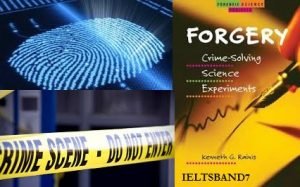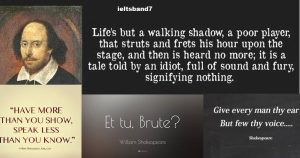READING PASSAGE 1
You should spend about 20 minutes on Questions 1–11, which are based on Reading Passage 1 below.
On the morning of November 23, 2009, a cyclist riding near Lake Charles, Louisiana, discovered the body of a young woman lying near a country road. Her face had been beaten beyond recognition, but an unusual tattoo led the police to identify her as 19-year-old Sierra Bouzigard. Investigators from the Calcasieu Parish Sheriff’s Office, headed by Sheriff Tony Mancuso, immediately set about reconstructing her final hours. The people who last saw Bouzigard alive had let her use their phone. The number she dialed gave police a lead.
Bouzigard’s assailant had also left behind a promising clue. From tissue caught under her fingernails as she struggled for her life, the detectives were able to pick up a clear DNA sample. To find the killer, all they needed was a match. The number she had dialed led police to a crew of undocumented Mexican workers. “So we started getting warrants for DNA swabs, getting translators, working with immigration,” Mancuso recalls.
But none of the Mexicans’ DNA matched the sample from the crime scene. Nor was there a hit in the FBI’s database of prior felons, missing persons, and arrestees, a system known as CODIS—the Combined DNA Index System. The investigators continued to issue calls for people with any information to come forward, and Bouzigard’s family offered a $10,000 reward. But the case grew cold.
Then, in June 2015, Monica Quaal, a lead DNA analyst at the lab that works with the sheriff’s office, learned about an intriguing new way of exploiting the information contained in a DNA sample—one that would not require a suspect’s DNA or a match in a database. Called DNA phenotyping, the technique conjures up a physical likeness of the person who left the sample behind, including traits such as geographic ancestry, eye and natural hair color, and even a possible shape for facial features. Quaal immediately thought of the Bouzigard case, in which the DNA left at the scene was virtually the only lead. She contacted Mancuso and Lt. Les Blanchard, a detective on the case, and they sent their sample to Ellen Greytak, director of bioinformatics at Parabon NanoLabs, a company specializing in DNA phenotyping.

Here the investigation took an unexpected turn. Based on the available evidence, the detectives still believed her killer was likely Hispanic—perhaps a member of the Mexican crew who had fled the area soon after committing the crime. But the person in the DNA-generated portrait Parabon produced had pale skin and freckles. His hair was brown, and his eyes were probably green or blue. His ancestry, the analysis said, was northern European.
“We kind of had to take a step back and say all this time, we’re not even in the right direction,” Mancuso says. But armed with this new evidence, he is optimistic. “I think at some point we can solve this case, because we have such a good DNA sample and this profile,” he says. “We know who the killer is. We just don’t know who the killer is.”
DNA phenotyping is a relatively recent arrival in forensic science, and some critics question how useful it will be. The facial composites it produces are predictions from genetics, not photographs. Many aspects of a person’s appearance are not encoded in DNA and thus can never be unearthed from it, like whether someone has a beard, or dyed hair. Nevertheless, Parabon, which calls its facial composite service Snapshot, has had more than 40 law enforcement organizations as customers. Human genome pioneer Craig Venter, as part of his new personalized health company called Human Longevity, is also investigating facial reconstruction from DNA, as are many academic labs.
Meanwhile other high-tech forensic methods are coming on the scene. CT scanners allow doctors to perform virtual autopsies, peering into bodies for signs of murder undetected by standard autopsies. Researchers are studying whether bacteria on corpses can provide a more accurate clock to gauge when death occurred. And they’re even investigating whether culprits might be identified not just by the DNA left at a crime scene but also by the microbial signature of the bacteria they leave behind.
The forensic techniques we’re more familiar with from movies and television shows such as CSI have far longer histories. In 1910 Thomas Jennings became the first American convicted of murder based primarily on fingerprint evidence. He was accused of shooting one Clarence Hiller during a bungled burglary. The culprit had left his fingerprints behind on a freshly painted windowsill, and the testimony of four fingerprint experts was nearly the entire basis on which Jennings was found guilty and sentenced to death. In response to his appeal, a higher court pointed both to the long heritage of using fingerprints for identification—pharaohs employed thumbprints as signatures, they said—and to “the great success of the system in England, where it has been used since 1891 in thousands of cases without error.” The court did caution that because such evidence fell beyond the purview of the average person’s experience, it must be presented by experts who could explain it to the jury. The verdict was upheld, and Jennings was hanged.
By the late 20th century, there were numerous investigative techniques in the courtroom. FBI analysts gave testimony comparing hairs found at a crime scene with those from suspects. Hair-analysis experts note the shape of the microscopic scales that coat hairs, the thickness and coloration of the hair, and the organization of pigment granules in it, among other qualities. Bite-mark analysis, in which experts compare the pattern left by a bite on a victim to a suspect’s teeth, was widely adopted in the early 1970s, including a 1974 court case that hinged on marks identified on a dead woman’s nose after she’d been exhumed. Other visual comparisons—between tire tracks, shoe prints, and patterns on bullet casings—also made their way from being clues used by law enforcement to identify suspects to becoming evidence presented in court to help prove guilt. In thousands of cases, judges tasked with deciding whether evidence is reliable have leaned on ample precedent to allow such forensic results to be admitted in court. Experts with years of experience at their craft have testified with assurance.
Kirk Odom was convicted of rape after an expert testified that a hair on the victim’s nightgown matched his. Odom spent more than 22 years in prison and eight on parole before DNA tests proved his innocence and fingered the real culprit. The FBI is now reviewing hundreds of other cases where the value of hair analysis may have been overstated.
Do the following statements agree with the information given in Reading Passage 1?
In boxes 1–7 on your answer sheet, write
TRUE if the statement agrees with the information
FALSE if the statement contradicts the information
NOT GIVEN if there is no information on this
- It was with the help of a body mark that police was able to find the name of the unknown body.
- CODIS is the system of ISA which keeps records of prior felons, missing person and likewise people.
- To find out the details of the murderer, the family of Sierra Bouzigard announced a reward of $10,000.
- The technique using which one can find out the natural colour, ancestory etc using the DNA sample is called DNA phenotyping.
- The murderer of Sierra Bouzigard was expected to be a green or blue eyed man, initially.
- DNA phenotyping uses photographs to figure out the possible details.
- CT scanners allow the doctors to undergo virtual autopsies.
Questions 8-11
Complete the sentences below.
Write NO MORE THAN THREE WORDS from the passage for each answer.
Write your answers in boxes 8-13 on your answer sheet.
8. ___________________ was the fist person to be convicted of murder on the basis of finger print.
In (9)___________________, the investigators look for the kind of bite marks left on the body of the analysis to decide the criminal.
The investigating teams look for (10)__________________ , organization of (11)___________ and many other qualities when doing search on the basis of strands of hairs available.
ANSWERS
- True
- False
- True
- True
- False
- False
- True
- Thomas Jennings
- Bite mark analysis
- coat hairs
- pigment granules
IELTSBAND7
Source – National Geographic



